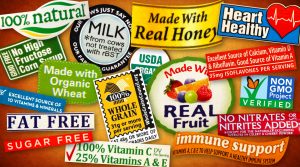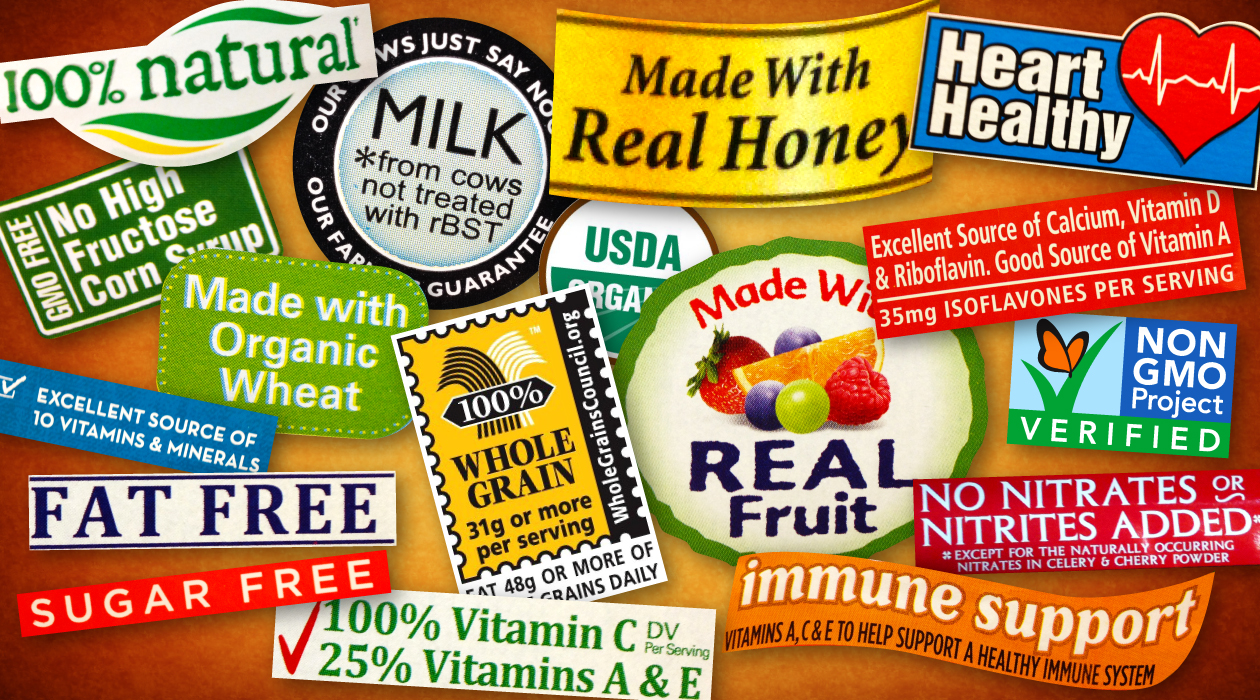 It is always a challenge to figure out if something is really good for your health or not, especially when food labels are telling you that they are the best for you.
It is always a challenge to figure out if something is really good for your health or not, especially when food labels are telling you that they are the best for you.
For instance, a milk is labelled as “low in fat”, but may include lots of sugar. The good thing is that nutrition claims are only allowed if the product meets the strict criteria outlined by the Food and Drug Administration and other concerned agencies.
The drawback is that a nutrition claim do not always provide the big picture. Here are some of the most common nutrition claims. Included are helpful suggestions designed to help people become smart shoppers.
1. The Fat-Free Label
This means: Every serving of the food or drink contains less than 0.5 grams of fat.
There are a handful of things to watch out. This is the kind of label that does not essentially mean that the food is healthy. For example, jelly beans, they are fat-free, but they are mainly sugar. In contrast, all vegetables and fruits are fat-free and very nutritious. You might wonder why there is no label saying fresh produce are fat-free. This is because they are exempted from nutrition labeling.
If you look at food package’s serving amount, you will notice that it is less than what you would usually consume. If you consume twice the quantity listed, you need to have twice the fat content too. Then, the portion is no longer fat-free. Bear in mind that a totally fat-free diet is neither healthy nor sensible. Everyone needs to consume some healthy fats for the body to better absorb various vitamins like A, D, and K as well as antioxidants.
2. The Trans Fat-Free of Zero Trans Fat
This means: The product has less than 0.2 grams of trans fat in every serving, and 2 grams or less saturated and trans fats combined.
Trans fat has whammy effect on a person’s well-being. It will not only increase the low-density lipoprotein (LDL) or bad cholesterol levels, but it will also reduce the high-density lipoprotein or good cholesterol levels. Baked products and snacks are usually the hiding places for trans fats. Although having 0.2 grams of trans fat in every serving is irrelevant, it does not add up if you eat a bag of trans fat-free cookies.
To make sure that the product is free of trans fat, read the listed ingredients and check if there is no shortening or partially hydrogenated oil included in the list.
3. The Low in Fat Label
This means: The product has 3 grams or less of fat in each serving.
Most cereals, bread, grains, pasta, and crackers are low in fat. But, if you check the nutrition facts table, you will find the other nutrients the food or drink does or does not have. Fat provides food with a certain texture, and food that have the minimal amount of fat normally contain more sugar.
You should take some time to compare product labels and select items with low fat, more fiber, and less sodium and sugar. Other low-fat goods you will find in the supermarket may or may not be branded like roasted chicken, fish, and beans.
4. The Cholesterol-Free Label
This means: The product has less than 2 milligrams of cholesterol for every serving.
Don’t be fooled by the cholesterol free claim on the packaged products. Only animal-based foods contain cholesterol. So if you find cholesterol-free salad dressings or vegetable oil, bear in mind that they never have cholesterol to start with.
Cholesterol-free is not equivalent to fat-free. Frozen French fries prepared with vegetable oil are certainly cholesterol-free, but not fat-free. But you can find other brands that are low-fat.
5. The Sugar-Free Label
This means: The product has less than 0.5 grams of sugar and has less than 5 calories for every serving.
Items that are claimed to be sugar-free like some beverages are normally manufactured with a sugar substitute. Picking these goods more often can be helpful for those who have diabetes and those who are watching their weight using garcinia cambogia dr oz, but still wish to have something sweet once in a while.
Always check the label. For you to choose the best, compare different brands to make sure that you are not trading sugar for more sodium and fat.
6. The No Added Sugar Label
This means: The product contains no added sugar like honey, maple syrup, sugar or molasses. Also, there are no ingredients that added sugars in them.
This label only tells one side of the coin – the other side is the natural sugar that is found in the product. For instance, a cup or 250 ml of the grape juice blend may not contain added sugar, but it still has 35 grams or roughly 9 teaspoons of natural sugar.
Be a smart shopper, read all parts of the label. Check the nutrition facts to get the whole story.
7. The High-Fiber Label
This means: the product contains 4 grams of fiber or more for every serving.
Lentils, granola bars, some cereals, and beans are among the foods that are high in fiber. A person needs 21 to 38 grams of fiber daily. According to the Dietitians of Canada, men age 19 to 50 need 30 to 38 grams of fiber every day, while women of the same age bracket need 25 grams daily.
Choose food with high fiber contents. Remember, food with less than 4 grams of fiber can still be very healthy. The good examples are whole grains (like barley and brown rice) and whole-grain cereals like oatmeal.
8. The Organic Label
This means: The product has 95% or more organic content.
Foods can only have the organic logo if they are certified organic. If a product contains less than the required percentage, then it is described in a different way. For instance, if a product has less than 95% organic content, it can say it has X percentage organic components. But, it should not be labelled organic.
If you like to have a healthy diet, pick foods that have at least 95% organic ingredients.
9. The Low-Sodium Label
This means: The product contains 140 milligrams or less sodium or table salt for every serving.
People should only consume 1,500 to 2,300 milligrams of sodium daily, unfortunately, they consume more than this amount. Too much salt may cause high blood pressure. You can become healthier by eating foods that have lesser sodium like low-sodium soups, crackers, and canned fish.
It won’t take long to check the fat content too. A Low-sodium corn chip that has more fat than other chips is not a better choice.
10. The “A Source/ A Good Source/An Excellent Source Of” Label
This means: The product has 5% (if “a source”); 15% (if “a good source”); or 25% (if “an excellent source”) of the RDI or Recommended Daily Intake of a specific mineral or vitamin.
You can use these kinds of claims when you are selecting foods that address your personal nutrition concerns. For instance, if a person is a vegetarian, he needs to have more iron than those non-vegetarians. He must look for a food that is at least a good source or an excellent source of iron.
But there are exceptions to these rules. For example, for vitamin C, a product needs to have at least 30% of the Recommended Daily Intake to be labelled as “a good source” and 50% of the Recommended Daily Intake to be considered an “excellent source.”
In addition, be careful with the “natural” label. This is an unregulated term, and the FDA presently considers it as something that means nothing synthetic or artificial has been added to the food. This includes color additives. The lack of definition and regulation may be changed in the future.
Just recently, the FDA asked the public for their opinions regarding the use of “natural” as a food label. The request started in November 2015 and ended in May 2016. Within the 6-month period, FDA received more than 7,500 comments.
The words and phrases on food labels can mean many different things depending on the context. To get the most accurate information, focus on the quantitative values you can find on the Nutrition facts.
